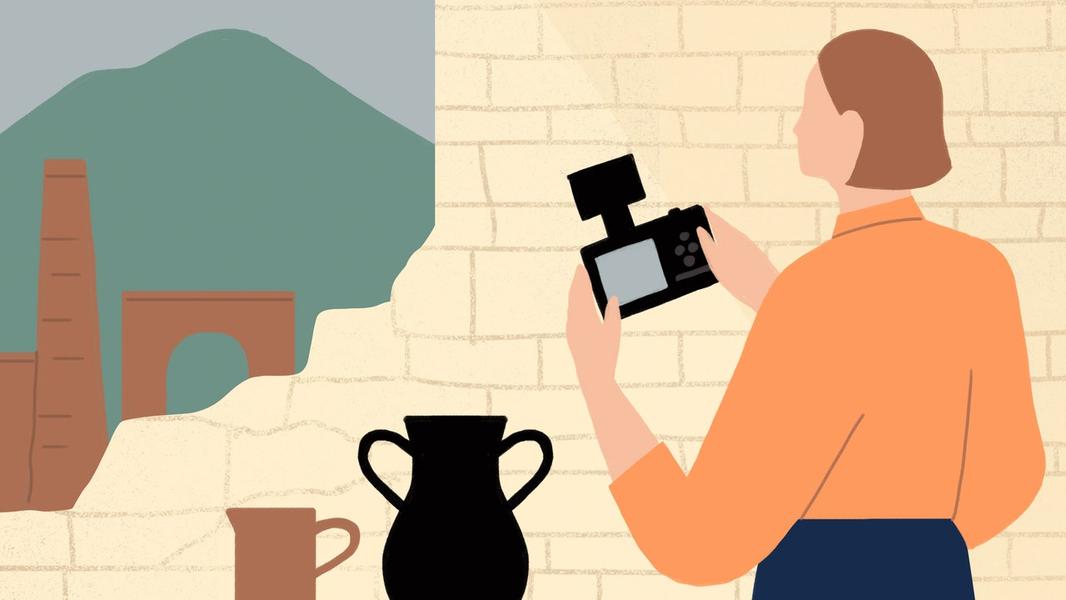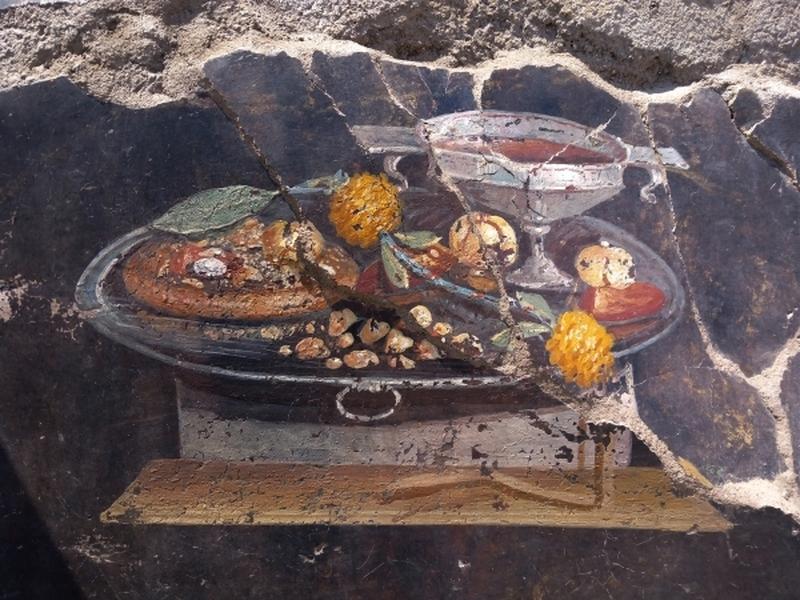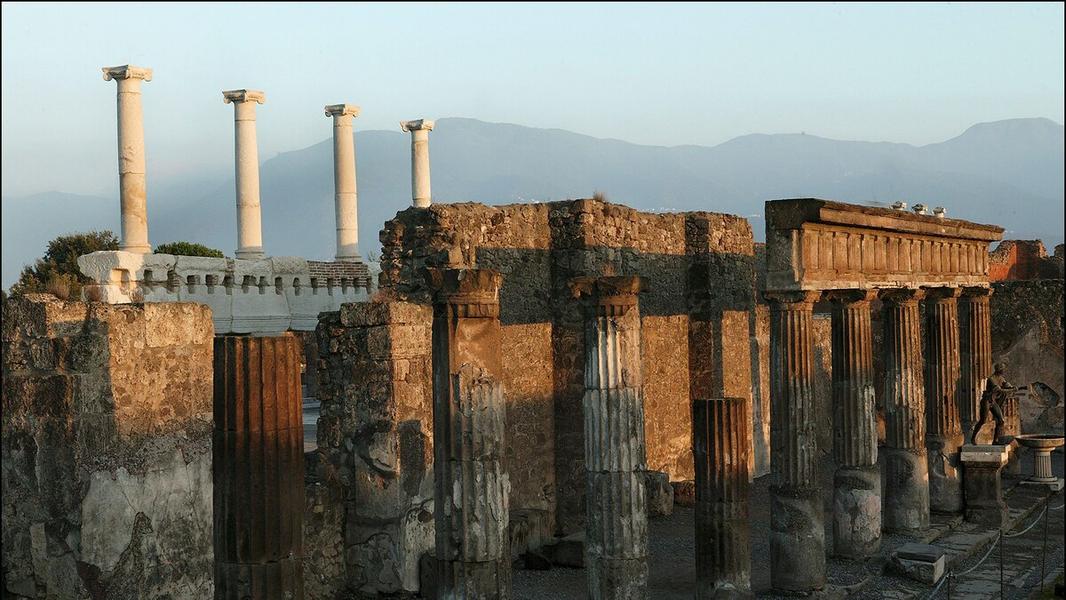
Ancient Pompeiians Stopped at This 'Snack Bar' to Feast on Snails, Fish and Wine | Smart News| Smithsonian Magazine
What are some of the intriguing discoveries made during recent excavations in Pompeii?
Some of the intriguing discoveries made during recent excavations in Pompeii include the finding of a snack bar next to an elegant mansion, providing insights into the dining habits of the residents. Another fascinating discovery is a fresco that may depict an ancestor of the modern pizza, showcasing the culinary traditions of the time. Additionally, the well-preserved thermopolium offers valuable information about the menus and daily life of ancient Pompeiians. These discoveries not only reveal the physical aspects of life in Pompeii but also provide a glimpse into the social and cultural aspects of the ancient Roman civilization.
What challenges does Pompeii face in terms of preservation and maintenance?
Pompeii faces several challenges in terms of preservation and maintenance. One of the main challenges is the threat of environmental factors, such as exposure to sunlight, rain, and temperature changes, which can cause deterioration of the ancient structures and artifacts. Another challenge is the need for conservation and restoration work to ensure the stability and longevity of the site. The ongoing excavations also pose a challenge as they require careful planning and execution to prevent damage to the already excavated areas. Additionally, there is a constant debate over further excavation and how to balance preservation with exploration. All these challenges require continuous efforts, funding, and expertise to preserve the historical integrity of Pompeii.
How has the ongoing research and discoveries in Pompeii contributed to our understanding of ancient Roman civilization?
The ongoing research and discoveries in Pompeii have greatly contributed to our understanding of ancient Roman civilization. Through the excavations, we have gained valuable insights into the daily life, social structure, and cultural practices of the ancient Romans. The discoveries of the snack bar, the fresco depicting a precursor to pizza, and the well-preserved thermopolium have shed light on the culinary traditions and dining habits of the time. The gardens of Pompeii have provided information about the importance of gardens in ancient Roman society and the techniques used to create the illusion of larger spaces. Additionally, the excavations have revealed the architectural and economic peak of Pompeii during the Roman period, giving us a glimpse into the city’s prosperity and recreational activities. Overall, the ongoing research and discoveries in Pompeii continue to enrich our understanding of ancient Roman civilization and its impact on Western civilization.
Full summary
Pompeii, a city frozen in time, continues to captivate visitors with its rich history and remarkable archaeological discoveries. From its well-preserved buildings to its intriguing artifacts, Pompeii offers a unique glimpse into the daily life of ancient Romans. In this article, we will delve into the main events and extra sources that shed light on the fascinating world of Pompeii.
The article begins with a conversation between two individuals who recount their observations and experiences during a visit to Pompeii. They describe Pompeii as a still active and imposing place to explore, despite its vulnerability to the elements. Efforts have been made to shore up its boundaries and protect the site from further deterioration.
Excavations in recent years have unearthed intriguing discoveries about the way people lived and worked in Pompeii. One of the most exciting finds is a snack bar located next to an elegant mansion. These bars were a common feature in Pompeii, as many residents lived in small rooms without kitchens.
Moving on to the extra sources, we learn about the extensive excavations and conservation efforts happening at Pompeii. The project aims to solve problems like water seepage and the preservation of the excavation edge. A wide range of professionals, including archaeologists, palaeoethnobotanists, and geologists, are involved in the excavation. The tops of the walls of the ancient buildings are also starting to emerge, providing further insights into the city's past.
Another exciting discovery in Pompeii is a fresco that may depict an ancestor of the modern pizza. This ancient image found in Insula 10, Regio IX showcases a flat focaccia with various fruits and spices. The quality of execution and the resemblance to a passage from Virgil's Aeneid make it a remarkable find. Further investigations are underway to explore its connections to the culinary traditions of the time.
The article also highlights the discovery of a well-preserved thermopolium in Pompeii, offering insights into the menus and daily life of ancient Pompeiians. The counter is adorned with a fresco of a sea nymph riding a seahorse, along with exquisite scenes of still life depicting butchered animals. Terracotta jars embedded into the counter contained various food and drink items, including a dish with fish and pork and a concoction involving snails, fish, and sheep. The excavation site provides valuable information about this ancient fast-food establishment.
Moving on to the gardens of Pompeii, we learn that they were spread throughout the city, with about one-third of the houses having a garden. These gardens varied in size, design, function, and plantings, and were considered the heart of the home. The article highlights their role in ancient Roman society and the techniques used to create the illusion of larger spaces.
As we explore the history and preservation of Pompeii, we discover the city's founding by the Oscans around the 8th century BC. It became an important commercial center and caught the interest of Greeks, Etruscans, and eventually the Romans. Pompeii reached its architectural and economic peak during the Roman period and became a popular recreational and resort town. However, the eruption of Mount Vesuvius in 79 AD buried the city under ash and pumice, preserving it for future generations to explore.
The article also addresses the challenges facing Pompeii, including the threat of environmental factors and the need for conservation and maintenance. The ongoing research and discoveries in Pompeii provide valuable insights into ancient Roman civilization. However, there is an ongoing debate over further excavation and how to balance preservation with exploration.
In conclusion, Pompeii continues to fascinate with its well-preserved ruins and remarkable artifacts. The ongoing excavations and discoveries shed light on the daily life and culture of ancient Romans. Despite the challenges, efforts are being made to ensure the preservation and protection of this unique historical site. Visitors to Pompeii are reminded to respect the rules and guidelines provided, ensuring that future generations can continue to experience the wonders of this ancient city.

















